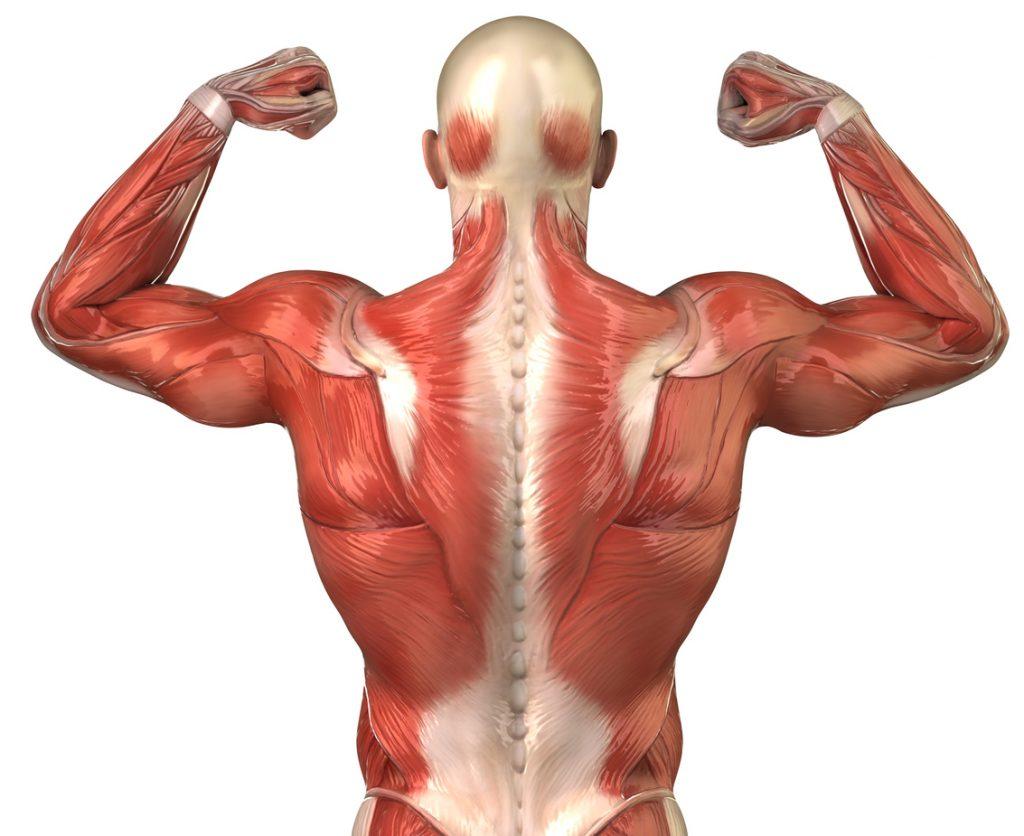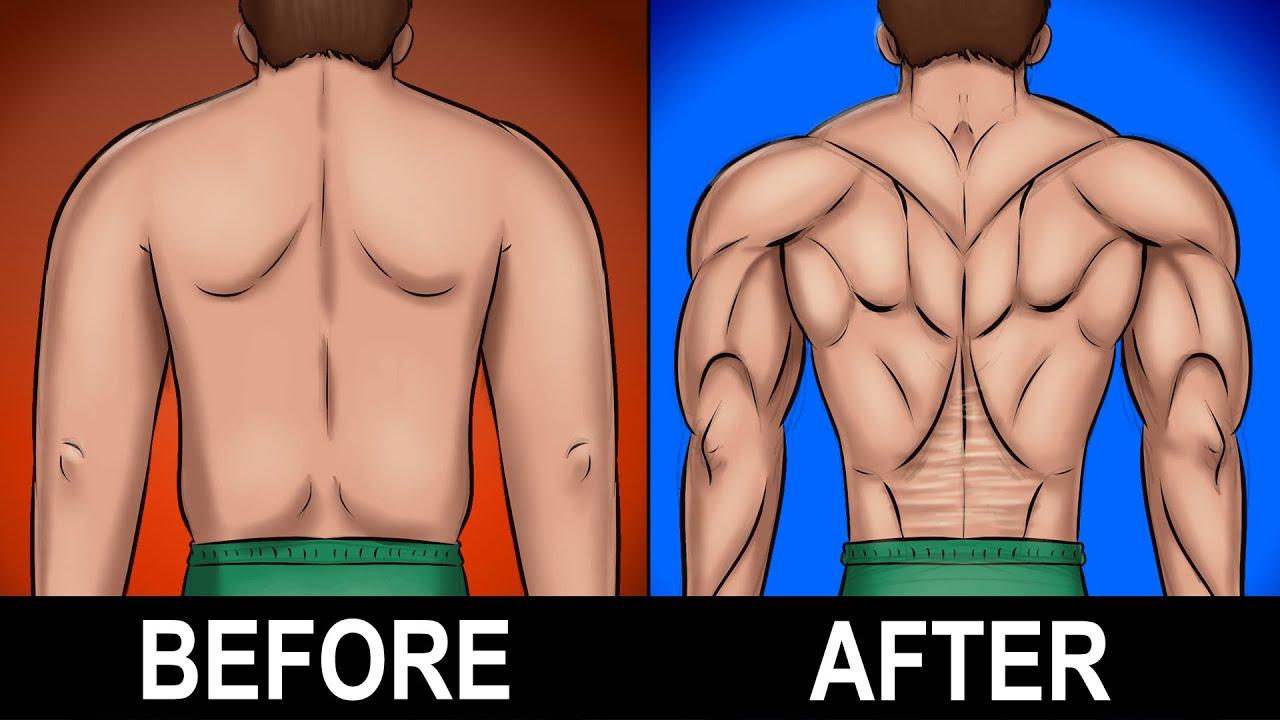In today’s fast-paced world, maintaining a strong and healthy back is more important than ever. Whether you’re sitting at a desk for long hours, lifting heavy objects, or simply navigating daily activities, a robust back is crucial for preventing injuries and enhancing overall well-being. In this guide, we will explore the most effective exercises specifically designed to target and strengthen the muscles of your back. By incorporating these exercises into your routine, you’ll not only improve your posture and reduce pain but also boost your confidence and performance in everyday tasks. Let’s delve into the essential strategies for building a stronger back, ensuring you’re equipped with the knowledge and techniques needed for a resilient and powerful spine.
Understanding Back Anatomy for Effective Workouts
The human back is a complex network of muscles that work together to support the spine and allow for a wide range of movements. Understanding the anatomy of your back can significantly enhance your workout effectiveness. The major muscle groups include the trapezius, latissimus dorsi, rhomboids, and erector spinae. Each of these muscles plays a crucial role in maintaining posture and enabling activities such as lifting, pulling, and twisting. Targeting these muscles with specific exercises can help you achieve a balanced and stronger back.
- Trapezius: This muscle extends from your neck down to the mid-back and is essential for shoulder movement and stabilization. Exercises like shrugs and upright rows can effectively target the trapezius.
- Latissimus Dorsi: Often referred to as “lats,” these are the large muscles on either side of your back. Pull-ups and lat pulldowns are excellent for engaging the latissimus dorsi.
- Rhomboids: Located between your shoulder blades, these muscles are crucial for retracting the scapula. Face pulls and rows are ideal for strengthening the rhomboids.
- Erector Spinae: Running along the spine, these muscles are vital for back extension and maintaining an upright posture. Deadlifts and hyperextensions are effective exercises for the erector spinae.
By incorporating exercises that focus on these muscle groups, you can develop a well-rounded back workout routine that not only builds strength but also enhances overall functional fitness.
Essential Equipment and Tools for Back Strengthening
Building a robust back requires not just dedication, but also the right set of tools to support your exercise routine. Incorporating essential equipment into your workout can significantly enhance your efforts and help target those critical back muscles effectively. Here’s a list of must-have items to get you started:
- Resistance Bands: These versatile tools are perfect for adding tension to your exercises without the need for heavy weights, making them ideal for strengthening the back muscles.
- Dumbbells: A staple in any fitness regimen, dumbbells are crucial for performing exercises like bent-over rows and deadlifts, which are excellent for building back strength.
- Pull-Up Bar: Installing a pull-up bar in your home gym can provide endless opportunities to perform pull-ups and chin-ups, essential exercises for developing a powerful back.
- Stability Ball: This equipment is not only great for core workouts but also for back exercises such as back extensions, which help in enhancing spinal strength and flexibility.
- Foam Roller: Essential for post-workout recovery, foam rollers help release muscle tension and improve circulation, promoting faster recovery of the back muscles.
Incorporating these tools into your exercise routine will not only diversify your workouts but also ensure that you are efficiently targeting all the muscle groups in your back. Equip yourself wisely, and you’ll be well on your way to achieving a stronger, more resilient back.
Step-by-Step Guide to Targeted Back Exercises
Transform your back workouts with a focused approach to strength-building exercises. Begin with lat pulldowns to engage the latissimus dorsi, providing that coveted V-shape. As you sit at the machine, pull the bar down towards your chest while keeping your elbows pointed slightly forward, ensuring a full contraction of the muscles. Follow up with bent-over rows to target the middle of your back. Holding a barbell with an overhand grip, bend slightly at the knees and hinge forward at the hips. Pull the bar towards your waist, squeezing your shoulder blades together for maximum effect.
- Deadlifts: Stand with feet hip-width apart, grip the barbell firmly, and lift by extending your hips and knees. Keep your back straight and shoulders retracted.
- Seated Cable Rows: Sit with knees slightly bent, grab the cable handle, and pull towards your abdomen, focusing on squeezing your shoulder blades.
- Reverse Flyes: Use dumbbells or a machine, keeping a slight bend in your elbows, and lift your arms to the side to work the rear deltoids and upper back.
Incorporate these exercises into your routine, ensuring proper form and gradual progression in weights. Consistency is key, and with dedication, you’ll build a resilient and powerful back.
Maximizing Results with a Balanced Exercise Routine
To effectively build a stronger back, integrating a balanced exercise routine is crucial. This approach not only targets various muscle groups but also ensures overall stability and posture improvement. Consider incorporating a mix of exercises that focus on strength, endurance, and flexibility. Here are some essential components to include in your routine:
- Compound Movements: Exercises like deadlifts and bent-over rows engage multiple muscles, promoting balanced development and functional strength.
- Isolation Exercises: Target specific areas such as the latissimus dorsi with pull-downs or the trapezius with shrugs to enhance muscle definition.
- Core Stability: A strong core supports your back. Include planks and Russian twists to reinforce this foundation.
- Flexibility Work: Stretching exercises like the cat-cow stretch and child’s pose can prevent stiffness and maintain a healthy range of motion.
By diversifying your workout regimen and regularly adjusting the intensity, you can maximize your back’s strength and endurance while minimizing the risk of injury. Always prioritize proper form and listen to your body’s signals to sustain progress and achieve your fitness goals.




